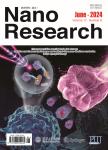A HfC nanowire point electron source with oxycarbide surface of lower work function for high-brightness and stable field-emission
作者机构:National Institute for Materials ScienceTsukubaIbaraki305-0047Japan Graduate School of Pure and Applied ScienceUniversity of TsukubaTsukubaIbaraki305-8857Japan Department of Physics and AstronomyUniversity of North Carolina at Chapel HillChapel HillNC27599-3255USA
出 版 物:《Nano Research》 (纳米研究(英文版))
年 卷 期:2020年第13卷第6期
页 面:1620-1626页
核心收录:
学科分类:0808[工学-电气工程] 0809[工学-电子科学与技术(可授工学、理学学位)] 07[理学] 070205[理学-凝聚态物理] 08[工学] 080501[工学-材料物理与化学] 0805[工学-材料科学与工程(可授工学、理学学位)] 0702[理学-物理学]
基 金:This work was supported partially by the NIMS-DENKA Centre of Excellence for Next Generation Materials A part of this work was also supported by NIMS Microstructural Characterization Platform as a program of“Nanotechnology Platform”of the Ministry of Education,Culture,Sports,Science and Technology(MEXT),Japan
主 题:hafnium carbide oxycarbide nanowire electron emission field emission
摘 要:Electric field-induced point electron source is highly demanded for microscopy,spectroscopy,lithography,X-ray tubes,microwave devices,and data ***,the instability in emission current and requirement of ultrahigh vacuum have often limited its extensive *** we report a single-crystalline HfC nanowire with oxycarbide emission surface for stable electron emission at 50 nA with fluctuations less than 1%in a vacuum of 4×10^−7 *** emitter has a low work function of 2.5 eV measured by the field emission Fowler-Nordheim curve and it is in good agreement with density functional theory(DFT)*** energy spread is in a range of 0.21–0.26 eV with a corresponding reduced brightness 1.95×10^11−3.81×10^11 A·m^−2·sr^−1·V^−*** HfC nanowire with oxycarbide emission surface is a qualified candidate for the next-generation electron source with high brightness,large current,and low energy spread.



